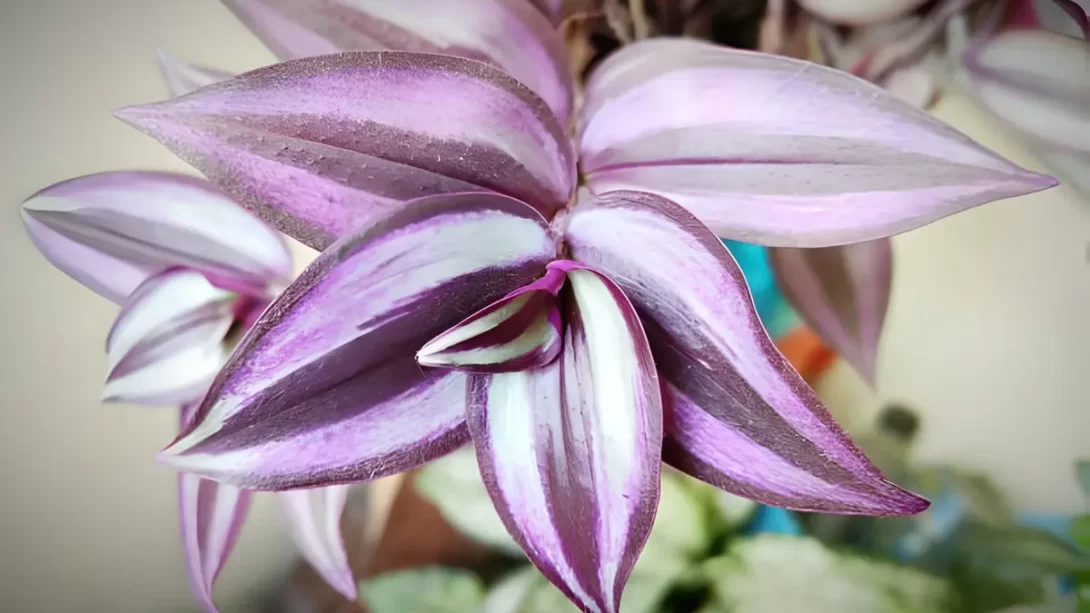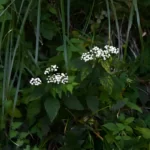The Wandering Jew, belonging to the Tradescantia genus, is a popular plant known for its striking, colorful foliage and ease of care. Often found in both indoor and outdoor settings, it adds a vibrant touch to homes and gardens. However, for dog owners, a vital question arises: is the Wandering Jew toxic to their furry companions? This article aims to explore the potential toxicity of the Wandering Jew to dogs, providing essential information for pet-friendly gardening and plant selection.
Wandering Jew
The Wandering Jew is characterized by its lush, trailing vines and leaves that often exhibit a mix of purple, silver, and green hues. Common varieties include Tradescantia zebrina, Tradescantia fluminensis, and Tradescantia pallida. These plants are favored for their rapid growth and adaptability, thriving in a range of light conditions and requiring minimal maintenance. In gardens, they are often used as ground covers or in hanging baskets, while indoors, they make attractive decorative houseplants.
General Plant Toxicity to Dogs
Understanding plant toxicity is crucial for dog owners who wish to maintain a safe environment for their pets. Dogs, due to their curious nature, may chew on or ingest plants, leading to potential health risks. Plant toxicity can range from mild irritation to severe poisoning, depending on the plant species and the specific compounds they contain. Some plants may cause only minor gastrointestinal upset, while others can lead to more serious health issues. Knowledge of which plants are harmful to dogs is a key aspect of responsible pet ownership and gardening.
Wandering Jew and Canine Toxicity
The Wandering Jew plant is known to be mildly to moderately toxic to dogs. This toxicity is primarily due to the sap in the leaves, which contains compounds that can irritate dogs’ skin and digestive system. When dogs come into contact with or ingest parts of the Wandering Jew plant, they may experience adverse reactions. It’s important for dog owners to recognize this risk, particularly if their pets have a tendency to nibble on plants.
Symptoms of Toxicity in Dogs
If a dog comes into contact with or ingests the Wandering Jew plant, several symptoms can occur. The most common symptom is dermatitis, which includes redness, itching, and rash on the skin, especially if the dog has been playing in or rubbing against the plant. If ingested, the plant can cause gastrointestinal upset, which may manifest as vomiting, diarrhea, or drooling. While these symptoms are generally mild, they can cause discomfort to the dog and may require veterinary attention, especially if they persist or worsen.
Prevention and Safety Measures
For dog owners, preventing exposure to Wandering Jew is key to safeguarding their pet’s health. If Wandering Jew is already present in the garden, consider relocating it to an area that is inaccessible to the dog. For indoor plants, ensure they are placed out of reach. Regularly trimming the plant can also reduce the risk of dogs coming into contact with fallen leaves or stems. Educating family members, especially children, about not allowing pets to chew on this and other potentially toxic plants is also important. Additionally, considering pet-friendly alternatives when planning a garden or choosing houseplants can significantly reduce the risks to pets.
First Aid and Treatment
If you suspect your dog has come into contact with or ingested Wandering Jew, observe them closely for any symptoms. For skin irritation, gently washing the affected area with mild soap and water can help alleviate itching and discomfort. If the dog has ingested the plant and is showing signs of gastrointestinal upset, ensure they have access to clean water to stay hydrated. In both cases, if symptoms persist or worsen, it is important to consult a veterinarian for further advice and treatment. The vet may provide medication to relieve symptoms or suggest other treatments depending on the severity of the reaction.
Alternatives to Wandering Jew
For those seeking safer plant alternatives, there are numerous non-toxic options that are equally attractive and easy to maintain. Some dog-friendly plants include Spider Plant (Chlorophytum comosum), Boston Fern (Nephrolepis exaltata), and African Violet (Saintpaulia). These plants can provide the same aesthetic appeal without posing health risks to dogs. When selecting plants for homes and gardens where pets are present, it is always advisable to research or consult a list of pet-safe plants.
Conclusion
In summary, while Wandering Jew is a visually appealing and easy-to-care-for plant, its mild to moderate toxicity to dogs cannot be overlooked. Dog owners should exercise caution by preventing access to this plant or opting for non-toxic alternatives. By being aware of the potential risks and taking proactive measures to protect their pets, dog owners can enjoy the benefits of gardening and indoor plants without compromising the health and safety of their furry family members. Responsible gardening and plant care, with consideration for our pets, ensures a harmonious and safe environment for all.



